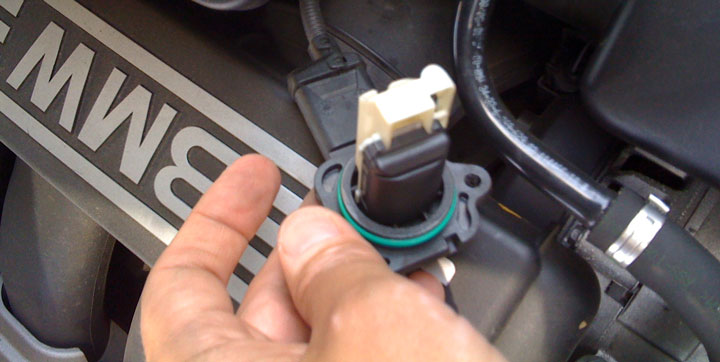P0170 Code (Symptoms, Causes, and How to Fix)
Modern vehicles can monitor air-fuel ratios, triggering diagnostic trouble codes if combustion efficiency declines. P0170 indicates an improper fuel trim or air/fuel mixture in the engine, signaling poor combustion and reduced efficiency.
Understanding this code provides insight into engine performance issues tied to poor combustion. Read on to learn what causes a P0170 code and how to fix it.

What Does Code P0170 Mean?
Diagnostic fault code P0170 is a fuel trim-related fault, of moderate severity. More specifically, in the event of diagnostic fault code P0170, an engine’s management software has detected an improper air-to-fuel ratio that cannot be corrected through traditional means.
Simply put, a vehicle’s PCM has been unable to correct the out of range fuel trim by modulating fuel delivery as it otherwise would.
Though this code tends to be relatively generic in nature, applying to a wide range of vehicle makes and models, it is often observed not frequently by those driving a Mercedes-Benz, or Volkswagen.
Additionally, diagnostic fault code P0170 is bank 1 specific, meaning that the improper fuel trim has been isolated to an engine’s #1 cylinder bank. DTC P0173 is used alternatively if this non-compliant condition is isolated to bank 2.
It is also worth mentioning that some vehicles will never log a P0170 diagnostic fault code. This stems from the fact that this fault is less descriptive in nature than many similar P017X series faults, meaning that it is often superseded by a fault more applicable to the issue at hand.
In fact, even when a P0170 fault is stored, another P017X code is often logged as well, serving as a more reliable indicator of the fault’s source.
Symptoms of Code P0170

Diagnostic fault code P0170 is often accompanied by a host of secondary symptoms, some of which can be quite troubling in nature. Those who prove proficient in recognizing these symptoms are generally quick to diagnose the issue at hand.
The following are several of the most common symptoms associated with DTC P0170.
- Illuminated check engine light
- Intermittent stalling
- Rough or erratic idle
- Hesitation under a load
- Reduced fuel economy
Causes of Code P0170

Diagnostic fault code P0170 can be caused by several different underlying issues, some of which tend to be easier to identify than others. By familiarizing yourself with these potential causes, you can bypass much of the guesswork associated with the diagnostic process.
The following are several of the most common causes of DTC P0170.
- Restricted air intake
- Faulty mass air flow sensor
- Leaking fuel injector
- Faulty fuel pressure regulator
- Restricted fuel return line
- Vacuum leaks
- Dirty air filter
- Excess exhaust backpressure
- Compromised carbon canister
- Exhaust system leak
- Faulty O2 sensor
- Failure of other critical sensors or circuits
- PCM failure
Is Code P0170 Serious?
Diagnostic fault code P0170 is generally considered to be of moderate severity. This stems from the significant number of driveability-related symptoms that are often associated with its presence. When DTC P0170 is logged, many vehicles are known to experience stalling, or other severe performance issues, including loss of power and hesitation.
Driving should be limited when a vehicle logs an active P0170 fault code, ideally lasting no longer than necessary to move the affected vehicle to a service center or other point of repair. One must also consider that the underlying issue that has caused this fault to be registered is only likely to worsen with time.
In any event, the root cause of a vehicle’s P0170 diagnostic fault code should be thoroughly diagnosed and repaired as soon as possible. Doing so can quite possibly save you from being forced to call a wrecker to your rescue.
If you lack the confidence in fixing such repairs on your own, it is recommended to schedule an appointment with a reliable service center at the earliest convenience.
How to Fix Code P0170

The following steps can be used to assist you in identifying the root cause of your vehicle’s P0170 diagnostic fault code. As always, factory-specific service literature for your particular model of the vehicle should be consulted before attempting any such repairs.
#1 – Check for Additional DTCs
Before beginning the diagnostic process, check for the presence of additional fault codes with a quality scan tool. Any such faults that are found should be thoroughly diagnosed and repaired before proceeding.
#2 – Consult Freeze Frame Data
Begin by consulting the freeze frame data attributed to the active fault. Check for out of specification sensor values that appear out of specification, especially those from the MAF sensor. Troubleshoot any sensors or related circuits that appear compromised.
#3 – Check Fuel Pressure
Next, you will check your vehicle’s fuel pressure at the engine’s fuel rail with an appropriate gauge. This can be used to isolate fuel regulator failures. Additionally, a fuel pressure stability test can be performed with a bidirectional scan tool to verify injector integrity.
#4 – Check for Vacuum Leaks
An unlit propane torch can be used to wand the engine compartment of a running vehicle to identify vacuum leaks. A sudden change in engine idle would indicate the point of leakage.
#5 – Perform Manufacturer-Specific Checks
At this point, if no defects have been identified, further testing will be required, as specified by your vehicle’s manufacturer. Most service literature of this type provides model-specific tests to verify the integrity of a vehicle’s PCM.
- P0480 Code (Symptoms, Causes, and How to Fix) - Apr 19, 2024
- Car Temperature Gauge Stopped Working? (Here’s Why) - Apr 15, 2024
- Ignition Coil vs Coil Pack (What’s the Difference?) - Apr 8, 2024
